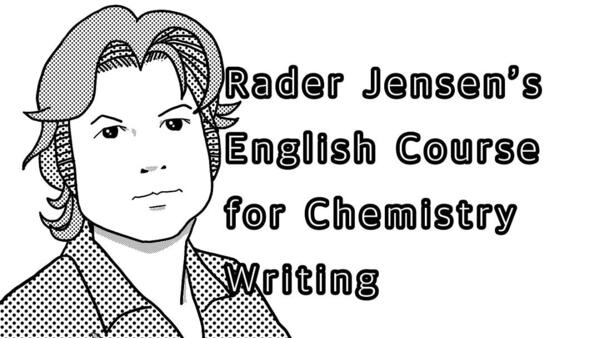CSJ Journals
[化学論文のための英語講座] 第16回:現在進行形・過去進行形・現在完了進行形 Part1
(English version is here.)
現在進行形:「今」行っていること
過去進行形:「過去のある時点で」一時的に継続に行ったこと
現在完了進行形:「過去のある時点から今まで継続して」行っていること
現在進行形は、研究論文でも利用されることがあります。例文を見てみましょう。
1. We are currently investigating the self-assembly of polypeptides.
和訳:現在、ポリペプチドの自己組織化を研究している。
また、過去進行形も研究論文で利用されることがあります。例文で確認しましょう。
2. We were anticipating difficulty in maintaining the enantiomeric integrity at the α carbon.
和訳:α炭素でエナンチオマーの安定性を維持することの難しさを予想していた。
前者の「are investigating」は現在「研究している」ことを表します。後者の「were anticipating」は過去に「予想していた」ことを表します。
そして、現在完了進行形も研究論文で利用されます。現在進行形との違いを以下に説明します。例文を見てみましょう。
3. We have been exploring the versatility of Metal Organic Frameworks (MOF).
和訳:私たちは、MOFの汎用性を追求してきました。
ここで「have been exploring」は、「過去から追及してきた」ことは今も続いていることを述べています。
現在完了形と現在完了進行形は同じ時間軸を述べますが、強調する時点が異なります。現在完了形は過去から現在までの動作または存在を表しますが、それをこれからも続けるかどうかは明確に述べません。例文を見てみましょう。
4. We, and others, have demonstrated the utility of Lewis acid catalyzed enantioselective reactions.
和訳:私たちや他の研究者は、ルイス酸触媒によるエナンチオ選択的反応の有用性を実証しました。
ここに「have demonstrated the utility」は「有用性を実証した」を述べますが、これからもその行為を継続するかは述べていません。この文章は「研究していた」「研究論文も出した」という印象を与えます。
一方、現在完了進行形は動作または存在が続くことを強調します。例文を見てみましょう。
5. We have been developing bidentate diphosphine ligands for ruthenium complexes as practical hydrogenation catalysts.
和訳:私たちは、実用的な水素化触媒として、ルテニウム錯体の二座のジホスフィン配位子を開発しています。
ここに「have been developing」は「過去から今まで開発している」ことを述べており、これからも研究が継続することを強調しています。
次回も引き続き「現在進行形・過去進行形・現在完了進行形」です。
Present progressive/past progressive/present perfect progressive
Present progressive: an action occurring now.
Past progressive: an action in the past that continued for a fixed period.
Present perfect progressive: an action that began in the past and continues in the present.
The present progressive tense also is used in research papers. Let us look at an example sentence.
1. We are currently investigating the self-assembly of polypeptides.
The past progressive tense is also used in research papers. Let us look at another example.
2. We were anticipating difficulty in maintaining the enantiomeric integrity at the α carbon.
The former, are investigating, expresses a present ongoing action. The latter, were anticipating, expresses an action that was ongoing in the past.
The present perfect progressive also appears in research papers. Let us look at a few examples and explain the difference between the present perfect and the present perfect progressive.
3. We have been exploring the versatility of Metal Organic Frameworks (MOF).
Here, the present perfect progressive have been exploring, describes an action that began in the past and still continues in the present.
The present perfect and the present perfect progressive describe the same time frame, but with a different point of emphasis. The present perfect represents an action or condition from the past to the present, but it is not explicitly stated whether it will continue. Let us look at an example.
4. We, and others, have demonstrated the utility of Lewis acid catalyzed enantioselective reactions.
Here, the present perfect have demonstrated, is an action that has been completed and possibly repeated, however, whether the action continues or not is not expressed. This particular example implies that experiments were completed and reported.
On the other hand, present progressive emphasizes the continuity of an action or condition. Let us look at an example.
5. We have been developing bidentate diphosphine ligands for ruthenium complexes as practical hydrogenation catalysts.
Here, the present perfect progressive have been developing, is an action that began in the past, has continued to the present, and continues into the future is emphasized.
To be continued in part 2.
